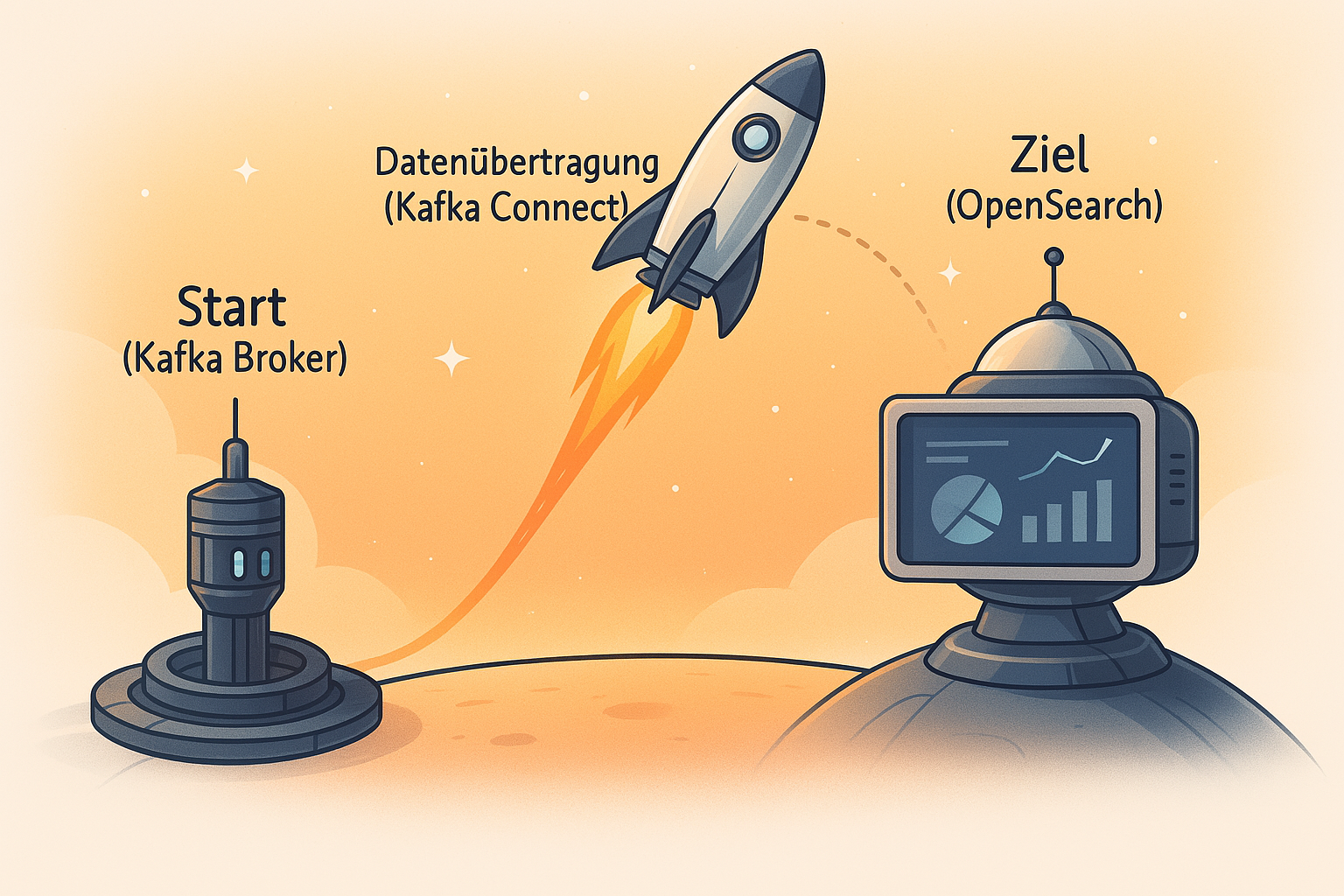curl -sfL https://get.k3s.io | K3S_KUBECONFIG_MODE="644" sh -Installing Strimzi
Install k3s
Install Strimzi CRDs + operator
Let’s continue in a new directory and also create a separate namespace for the Strimzi operator:
mkdir ~/strimzi
cd ~/strimzi
kubectl create namespace strimzi-operator
kubectl create namespace kafkaNow we download the Strimzi CRDs and the operator and adjust the namespace configuration so that the operator runs in the namespace strimzi-operator:
wget https://github.com/strimzi/strimzi-kafka-operator/releases/download/0.40.0/strimzi-crds-0.40.0.yaml -O strimzi-crds.yaml
wget https://github.com/strimzi/strimzi-kafka-operator/releases/download/0.40.0/strimzi-cluster-operator-0.40.0.yaml -O strimzi-cluster-operator.yaml
sed -i 's/namespace: .*/namespace: strimzi-operator/' strimzi-cluster-operator.yamlWe want Strimzi Operator to monitor all namespaces so that we can also start several Kafka clusters per Kubernetes.
However, we need to customise the Strimzi deployment for this. To do this, replace the following lines in the strimzi-cluster-operator.yaml file:
strimzi-cluster-operator.yaml# Old (for me line 7452
env:
- name: STRIMZI_NAMESPACE
valueFrom:
fieldRef:
fieldPath: metadata.namespace
# New
env:
- name: STRIMZI_NAMESPACE
value: "*"The operator requires some additional rights that are not available in the deployment:
kubectl create clusterrolebinding strimzi-cluster-operator-namespaced --clusterrole=strimzi-cluster-operator-namespaced --serviceaccount strimzi-operator:strimzi-cluster-operator
kubectl create clusterrolebinding strimzi-cluster-operator-watched --clusterrole=strimzi-cluster-operator-watched --serviceaccount strimzi-operator:strimzi-cluster-operator
kubectl create clusterrolebinding strimzi-cluster-operator-entity-operator-delegation --clusterrole=strimzi-entity-operator --serviceaccount strimzi-operator:strimzi-cluster-operatorNow we can install the CRDs and the operator:
kubectl apply -f strimzi-crds.yaml
kubectl apply -f strimzi-cluster-operator.yaml -n strimzi-operatorWait a moment until the operator is ready:
kubectl get pods -n strimzi-operator -wConfigure Kafka Cluster
We would now like to set up the Kafka cluster "correctly" with KRaft:
-
3 KRaft Controllers with 5GB memory each
-
3 Kafka Brokers with 50GB memory each
To do this, we create a node pool for both the controllers and the brokers:
kafka-controller-pool.yamlapiVersion: kafka.strimzi.io/v1beta2
kind: KafkaNodePool
metadata:
name: controller
namespace: kafka
labels:
strimzi.io/cluster: kafka
spec:
replicas: 3
roles:
- controller
storage:
type: jbod
volumes:
- id: 0
type: persistent-claim
size: 5Gi
deleteClaim: falsekafka-broker-pool.yamlapiVersion: kafka.strimzi.io/v1beta2
kind: KafkaNodePool
metadata:
name: broker
namespace: kafka
labels:
strimzi.io/cluster: kafka
spec:
replicas: 3
roles:
- broker
storage:
type: jbod
volumes:
- id: 0
type: persistent-claim
size: 50Gi
deleteClaim: falseFinally, the resources for the Kafka Cluster itself:
kafka-cluster.yamlapiVersion: kafka.strimzi.io/v1beta2
kind: Kafka
metadata:
name: kafka
namespace: kafka
annotations:
strimzi.io/node-pools: enabled
strimzi.io/kraft: enabled
spec:
kafka:
version: 3.9.1
listeners:
- name: plain
port: 9092
type: internal
tls: false
config:
offsets.topic.replication.factor: 3
transaction.state.log.replication.factor: 3
transaction.state.log.min.isr: 2
default.replication.factor: 3
min.insync.replicas: 2
entityOperator:
topicOperator: {}
userOperator: {}Now we can create the resources:
# We are still in the namespace kafka
kubectl apply -f kafka-controller-pool.yaml
kubectl apply -f kafka-broker-pool.yaml
kubectl apply -f kafka-cluster.yamlTake a closer look at the Kafka resource and then wait until the pods have started:
kubectl config set-context --current --namespace=kafka
kubectl describe kafka kafka
kubectl get pods -wContinue reading

Practical Guide: Stream Data from Kafka to OpenSearch in Kubernetes
In this article, I'll show you how to automatically send data from a Kafka topic to OpenSearch. We'll use Kafka Connect and Strimzi in Kubernetes.
Read more
Setting up a Kafka Test Environment
Learn how to set up a multi-node Kafka test environment on a single machine for development and testing purposes. This guide shows you how to configure three Kafka brokers with proper controller setup.
Read more
